It looks like you're using an Ad Blocker.
Please white-list or disable AboveTopSecret.com in your ad-blocking tool.
Thank you.
Some features of ATS will be disabled while you continue to use an ad-blocker.
share:
originally posted by: wildespace
I worry, though, that the space between the rings and Saturn might not be completely free of icy particles, and that Cassini might experience a collision.
If its anything like flying between rings in Elite Dangerous then you can kiss cassini goodbye.
In all seriousness, is does seem risky...but if they pull out off...the images!
a reply to: Jungian
Handsdown the most successful NASA probe mission ever - bar none.
Cassini will be sorely missed. I'm hoping the NASA engineers and designers are smart enough to learn from this mission and design future probes and missions accordingly.
Way to knock the cover off the ball, Cassini!!
Handsdown the most successful NASA probe mission ever - bar none.
Cassini will be sorely missed. I'm hoping the NASA engineers and designers are smart enough to learn from this mission and design future probes and missions accordingly.
Way to knock the cover off the ball, Cassini!!
originally posted by: 3danimator2014
a reply to: Jungian
The cassini mission is in my opinion one of NASA's most awe inspiring triumphs. On par with Voyager IMO.
the wealth of new discoveries and knowledge it has given us is staggering...as well as some of the most beautiful pictures of our solar system ever taken.
I have raved in threads on ATS many times before and I will continue to do so.
I'm hoping to make a huge Cassini thread before its final plummet, showcasing the amazing things its discovered.
Wonderful craft. Wonderful mission.
Already some amazing (and, as far as I know, unprecedented) closeup shots of Saturn's clouds:
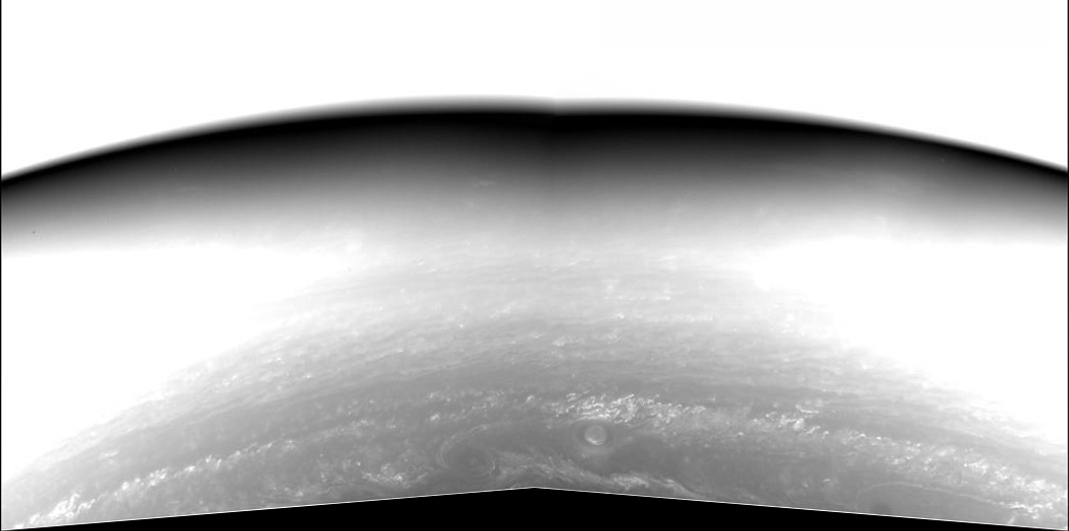
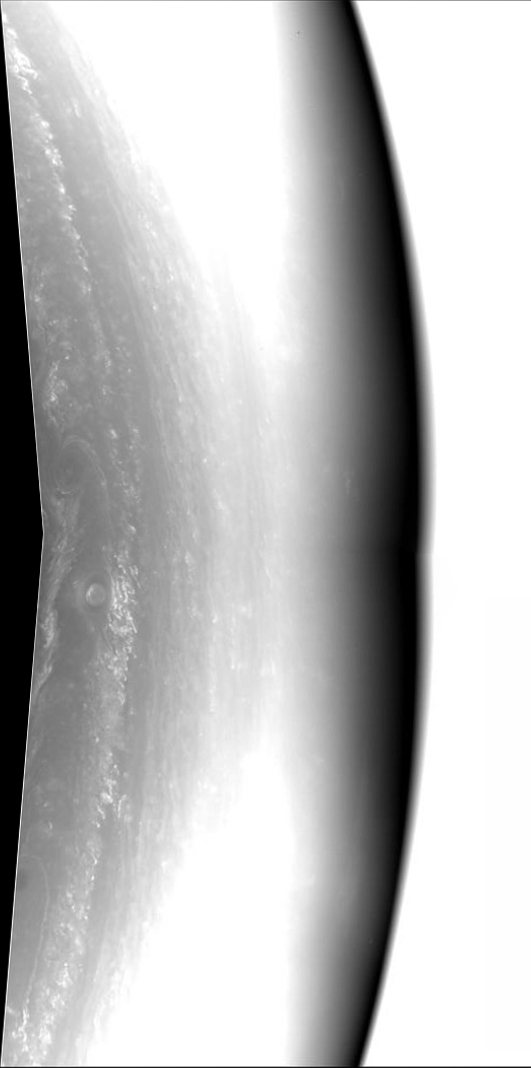
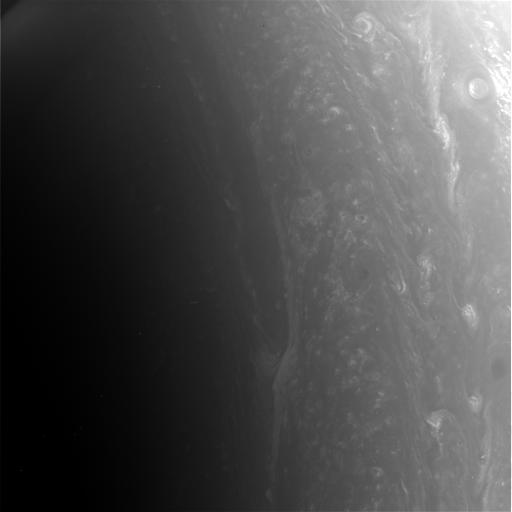
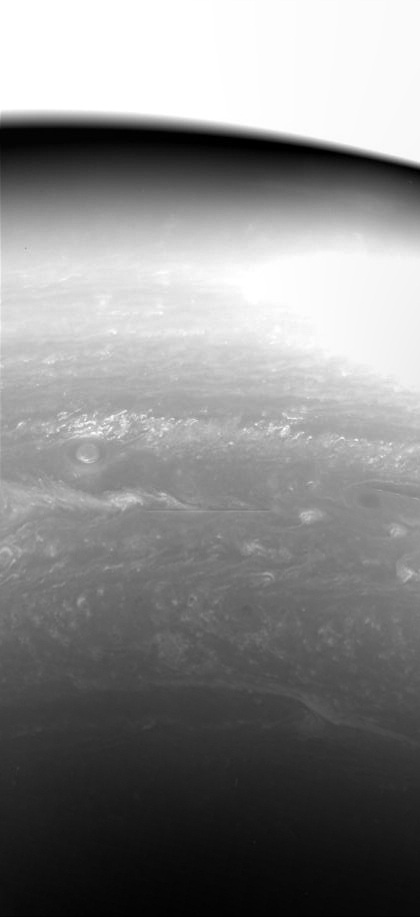

These are uncannily similar to the CGI views of Saturn from that recent video about Cassini's final mission:
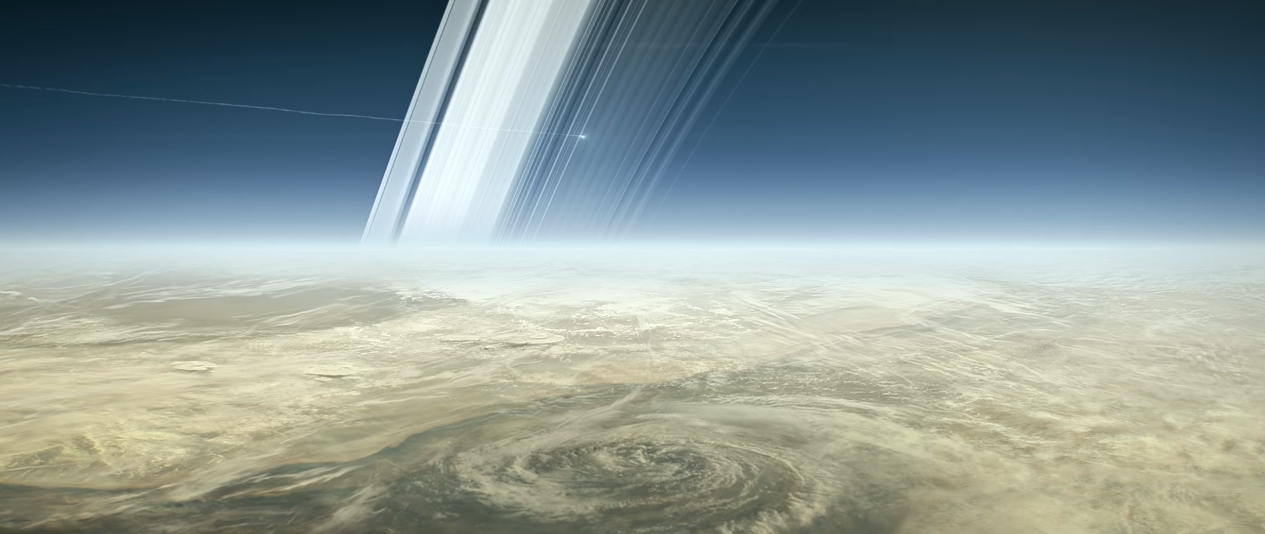
Saturn has always looked very smooth and almost featureless in all previous images, save for a large storm here and there. I remember someone commenting somewhere that closeup shots will reveal a richly-detailed and swirly atmosphere, and that person was proven right!
I am now watching the raw images archive on a daily basis for any new gems like that.
P.S. I have a feeling that these shots are of Saturn's polar region, where such swirly clouds can typically be found (like we've seen from JunoCam at Jupiter), and the bluish hues in this quick RGB (approximately true-colour) image I just made support this.
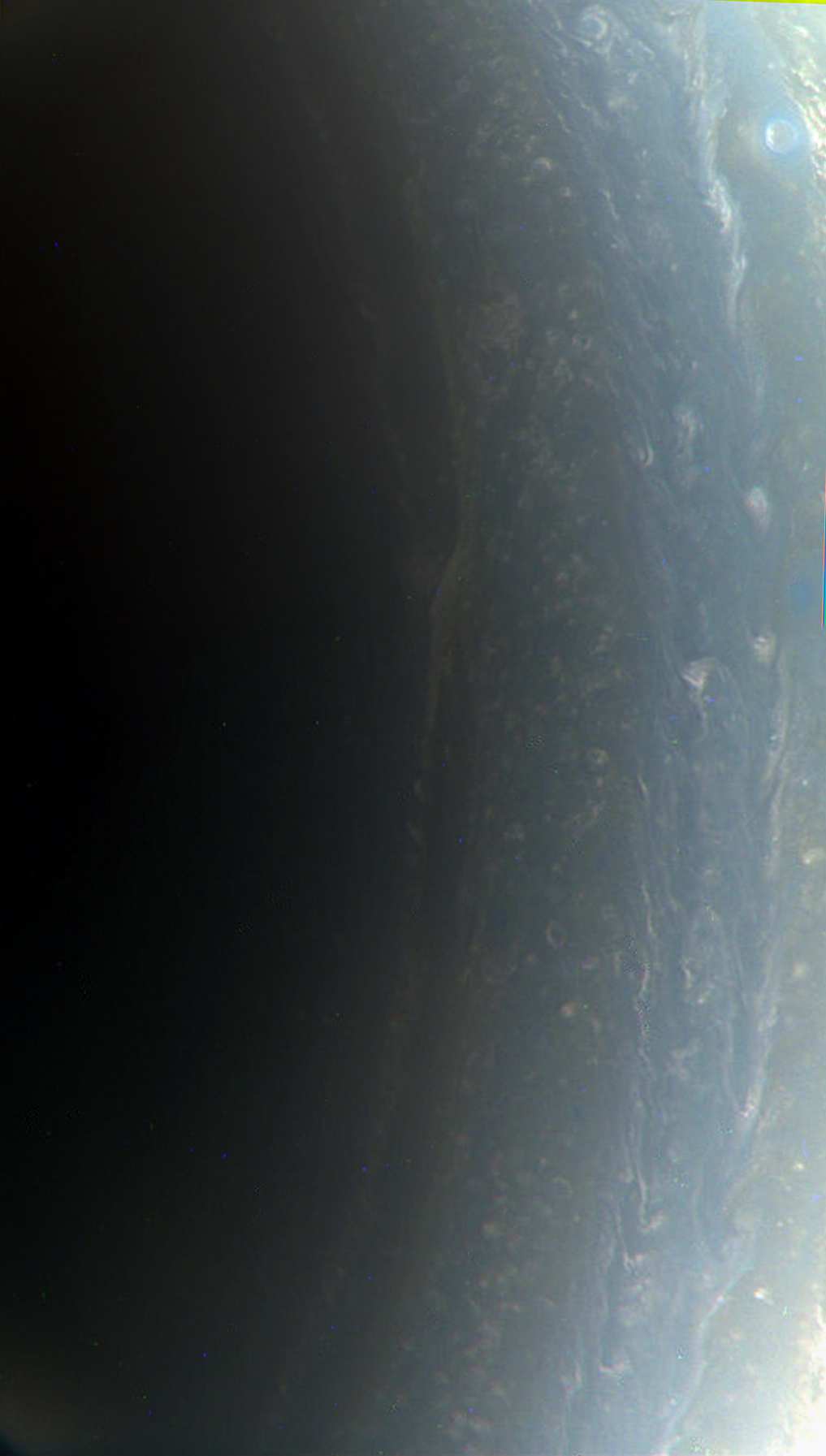
I'm sure we'll get more information about these images (and some masterful processing) at the Unmanned Spaceflight forum.





These are uncannily similar to the CGI views of Saturn from that recent video about Cassini's final mission:

Saturn has always looked very smooth and almost featureless in all previous images, save for a large storm here and there. I remember someone commenting somewhere that closeup shots will reveal a richly-detailed and swirly atmosphere, and that person was proven right!
I am now watching the raw images archive on a daily basis for any new gems like that.
P.S. I have a feeling that these shots are of Saturn's polar region, where such swirly clouds can typically be found (like we've seen from JunoCam at Jupiter), and the bluish hues in this quick RGB (approximately true-colour) image I just made support this.

I'm sure we'll get more information about these images (and some masterful processing) at the Unmanned Spaceflight forum.
edit on 14-4-2017 by wildespace because: (no
reason given)
I'm thinking we should make this thread the official Cassini Grand Finale thread, so I'm gonna carry on posting the updates and images here.
~~~
After making a daring "dive" in-between Saturn and its rings, Cassini took a series of images that make up this stunning night-side mosaic of Saturn, with rings back-lit by the Sun:
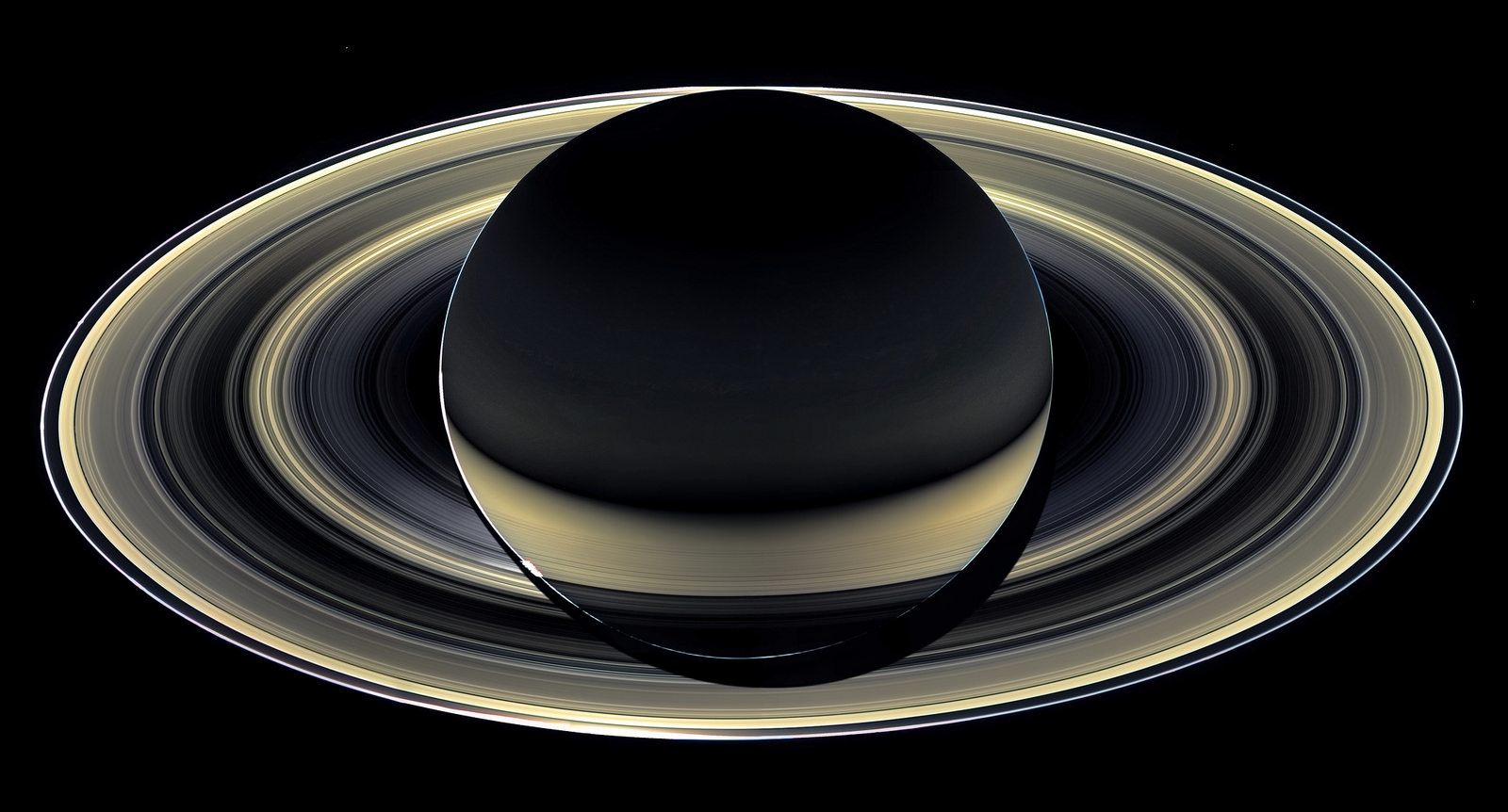
Processing by Ian Regan
Another cool series of images were taken of Saturn's moon Titan, and featuring bands of methane clouds in its atmosphere, visible here at near-infrared wavelength:
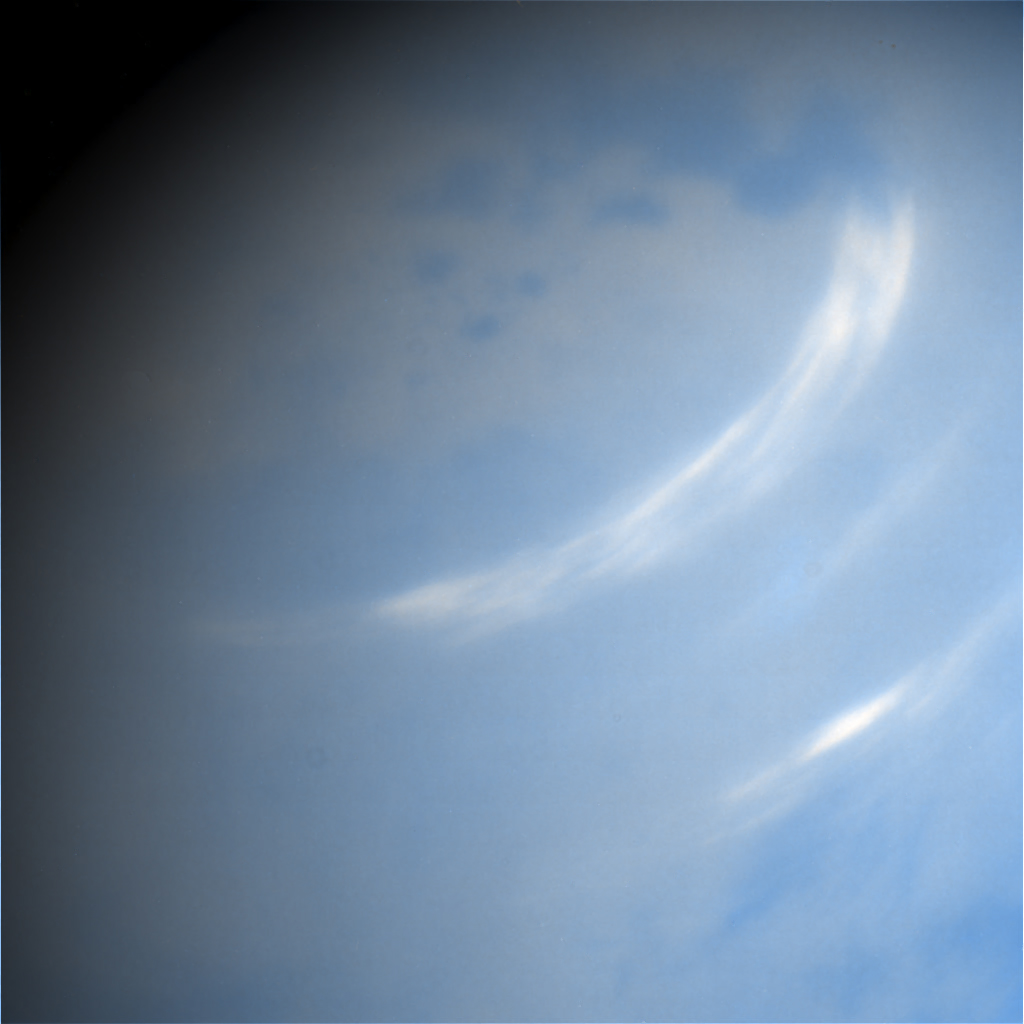
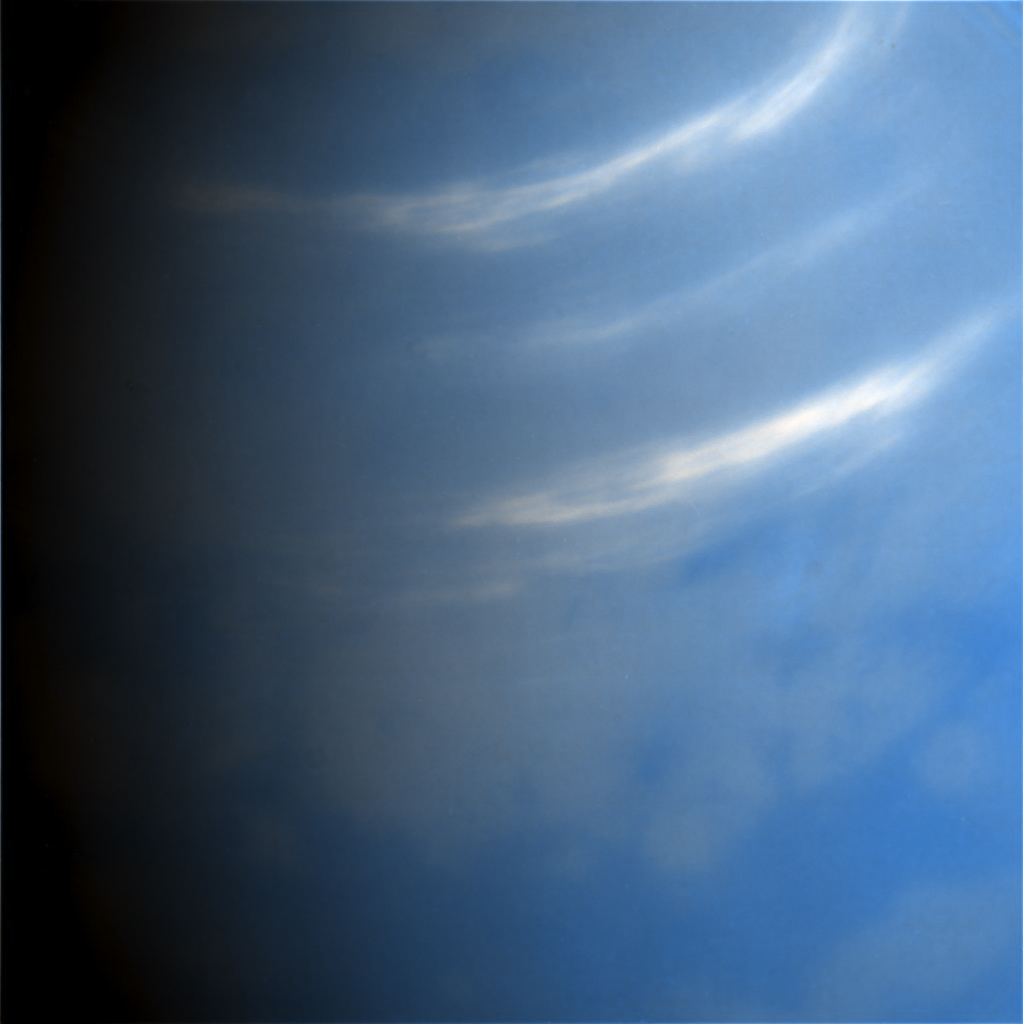
False-colour images, processing by me.
~~~
After making a daring "dive" in-between Saturn and its rings, Cassini took a series of images that make up this stunning night-side mosaic of Saturn, with rings back-lit by the Sun:

Processing by Ian Regan
In the early hours of April 13, 2017, a veteran NASA probe captured this breathtaking and unique visage of the Saturnian system as it coasted through space in the shadow of the gas giant.
Using its Wide-Angle Camera (part of the Imaging Science Subsystem), Cassini snapped 96 individual digital photos: these images consisted of Red, Green, and Blue-filtered frames, covering a total of 32 ‘footprints’. These 32 color frames were painstakingly combined to produce the final mosaic.
The veteran spacecraft took nearly four hours to collect these data.
Another cool series of images were taken of Saturn's moon Titan, and featuring bands of methane clouds in its atmosphere, visible here at near-infrared wavelength:


False-colour images, processing by me.
originally posted by: wildespace
I'm thinking we should make this thread the official Cassini Grand Finale thread, so I'm gonna carry on posting the updates and images here.
~~~
After making a daring "dive" in-between Saturn and its rings, Cassini took a series of images that make up this stunning night-side mosaic of Saturn, with rings back-lit by the Sun:
False-colour images, processing by me.
Awesome
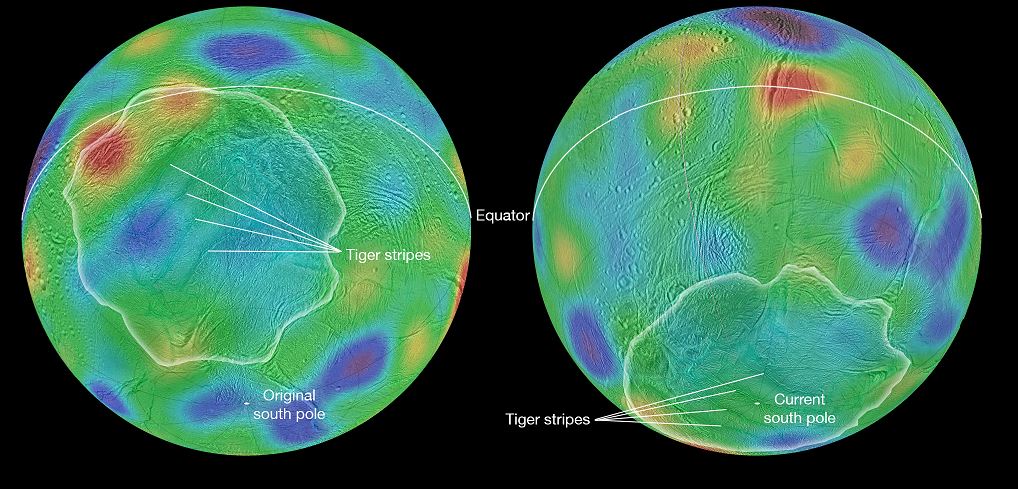
Saturn's icy, ocean-bearing moon Enceladus may have tipped over in the distant past, according to recent research from NASA's Cassini mission. Researchers with the mission found evidence that the moon's spin axis -- the line through the north and south poles -- has reoriented, possibly due to a collision with a smaller body, such as an asteroid.
Examining the moon's features, the team showed that Enceladus appears to have tipped away from its original axis by about 55 degrees -- more than halfway toward rolling completely onto its side.
NASA/JOL (credit: PIA21612, cropped)
jpl.nasa.gov, May 30, 2017 - Cassini Finds Saturn Moon May Have Tipped Over.
That is pretty crazy! It may have been struck causing it to flip over. There are bunch of photos going up at the Grand Finale site. Saturn on Solstice was awesome! There is one of Saturn's outer ring with a wave" going through it as the ring interacts with another moon. The processed images are going to amaze for years to come!
a reply to: wildespace
Agreed!
I've got this one bookmarked.
Thread bump too!
I'm thinking we should make this thread the official Cassini Grand Finale thread, so I'm gonna carry on posting the updates and images here.
--wildespace
Agreed!
I've got this one bookmarked.
Thread bump too!
There hadn't been update here so I ended up posting this on another thread. It belongs here.
NASA: Cassini's First Fantastic Dive Past Saturn
Source: NASA/JPL.
They took the images from the dive and edited them together to make this animation. That is one wild drop! Cassini drops from 45,000 to 4,200 miles (72,400 to 6,700 kilometers) above the atmosphere!
Next fly-by is June 28. They going to open up the camera's ability for the next fly-by hence their enthusiasm in the quote. I can't wait to see that video! I hope they do the same! Just because it is so awesome!
"The images from the first pass were great, but we were conservative with the camera settings. We plan to make updates to our observations for a similar opportunity on June 28 that we think will result in even better views," said Andrew Ingersoll, a member of the Cassini imaging team based at Caltech in Pasadena, California.
NASA: Cassini's First Fantastic Dive Past Saturn
Source: NASA/JPL.
They took the images from the dive and edited them together to make this animation. That is one wild drop! Cassini drops from 45,000 to 4,200 miles (72,400 to 6,700 kilometers) above the atmosphere!
Next fly-by is June 28. They going to open up the camera's ability for the next fly-by hence their enthusiasm in the quote. I can't wait to see that video! I hope they do the same! Just because it is so awesome!
In the study, published in Astrophysical Journal Letters, scientists identified negatively charged molecules called 'carbon chain anions' in the atmosphere of Titan, Saturn's largest moon. These linear molecules are understood to be building blocks towards more complex molecules, and may have acted as the basis for the earliest forms of life on Earth.
The team say the discovery of the negatively charged carbon chain anions is surprising because they are highly reactive and should not last long in Titan's atmosphere before combining with other materials.
Interestingly, the data show that the carbon chains become depleted closer to the moon, while precursors to larger aerosol molecules undergo rapid growth. This suggests a close relationship between the two, with the carbon chains 'seeding' the larger molecules that are thought to fall down to, and deposit on, the surface.
phys.org, July 27, 2017 - Has Cassini found a universal driver for prebiotic chemistry at Titan?
Cassini is finding out about things that were not even thought to be happening thanks to getting up close and personal. "Prebiotic" is yet another step closer to the announcement of "life found elsewhere besides earth". The article mentions a few other entities where this reaction may place including Pluto and Titan, and, comets.
This process may be happening all around the universe including exoplanets. Is this more of the slow leak from NASA?
Glad that Cassini can provide more than cool pictures!
Sept. 14 -- Cassini's imaging cameras take their last look around the Saturn system, sending back pictures of moons Titan and Enceladus, the hexagon-shaped jet stream around the planet's north pole, and features in the rings.
• Sept. 14 (5:45 p.m. EDT / 2:45 p.m. PDT) -- Cassini turns its antenna to point at Earth, begins a communications link that will continue until end of mission, and sends back its final images and other data collected along the way.
• Sept. 15 (4:37 a.m. EDT / 1:37 a.m. PDT) -- The "final plunge" begins. The spacecraft starts a 5-minute roll to position INMS for optimal sampling of the atmosphere, transmitting data in near real time from now to end of mission.
• Sept. 15 (7:53 a.m. EDT / 4:53 a.m. PDT) -- Cassini enters Saturn's atmosphere. Its thrusters fire at 10 percent of their capacity to maintain directional stability, enabling the spacecraft's high-gain antenna to remain pointed at Earth and allowing continued transmission of data.
• Sept. 15 (7:54 a.m. EDT / 4:54 a.m. PDT) -- Cassini's thrusters are at 100 percent of capacity. Atmospheric forces overwhelm the thrusters' capacity to maintain control of the spacecraft's orientation, and the high-gain antenna loses its lock on Earth. At this moment, expected to occur about 940 miles (1,510 kilometers) above Saturn's cloud tops, communication from the spacecraft will cease, and Cassini's mission of exploration will have concluded. The spacecraft will break up like a meteor moments later.
JPL.NASA.gov, Aug. 29, 2017 - Saturn Plunge Nears for Cassini Spacecraft.
There are the last few days. Less than a week. Even NOVA is doing a special show on Cassini.
What a year for space exploration! Florence flew by, they tried to take a photo of the supermassive black hole's event horizon at the center of our galaxy (Nov or Dec they should have the data), rumors abound that we caught two neutron stars merging, speaking of which... there were three gravity waves detected, the Voyager spacecraft turned 40 and are now star trekking, there was an eclipse (I think, I didn't hear anything about it! [/sarcasm]), water vapor was detected around the Trappist-1 system, and now we say farewell to Cassini.
What a ride! What photos (I'm sure we will keep on hearing about discoveries for years to come)!!
new topics
-
Shane Gillis commercial
Jokes, Puns, & Pranks: 3 hours ago -
Elon Says It’s ‘Likely’ He Buys Tanking MSNBC
Political Ideology: 5 hours ago -
Montelukast affects brain, caused 5 year old to attempt suicide
Medical Issues & Conspiracies: 6 hours ago -
Jaguar Rebrand Video Causes "WTF?" Moment - Seriously Weird
Automotive Discussion: 8 hours ago -
Let's start a conspiracy
General Conspiracies: 9 hours ago -
What Joe Rogan said Vs The View
Dissecting Disinformation: 11 hours ago
top topics
-
Biden's "Reckless" Decision To Escalate Russia-Ukraine War
World War Three: 13 hours ago, 16 flags -
Elon Says It’s ‘Likely’ He Buys Tanking MSNBC
Political Ideology: 5 hours ago, 15 flags -
Jaguar Rebrand Video Causes "WTF?" Moment - Seriously Weird
Automotive Discussion: 8 hours ago, 14 flags -
Montelukast affects brain, caused 5 year old to attempt suicide
Medical Issues & Conspiracies: 6 hours ago, 13 flags -
What Joe Rogan said Vs The View
Dissecting Disinformation: 11 hours ago, 11 flags -
Shane Gillis commercial
Jokes, Puns, & Pranks: 3 hours ago, 4 flags -
Let's start a conspiracy
General Conspiracies: 9 hours ago, 1 flags
active topics
-
Post A Funny (T&C Friendly) Pic Part IV: The LOL awakens!
General Chit Chat • 7813 • : watchitburn -
President-Elect TRUMP Picks Former Florida A.G. PAM BONDI to be U.S. Attorney General.
2024 Elections • 44 • : baddmove -
International Criminal Court Issues Arrest Warrant For Netanyahu
Mainstream News • 40 • : ToneD -
-@TH3WH17ERABB17- -Q- ---TIME TO SHOW THE WORLD--- -Part- --44--
Dissecting Disinformation • 3349 • : 777Vader -
Elon Says It’s ‘Likely’ He Buys Tanking MSNBC
Political Ideology • 61 • : TruthJava -
Here is why Western leaders in NATO have zero fear of nuclear warfare. At all. Zero.
World War Three • 8 • : tomeville -
The Acronym Game .. Pt.4
General Chit Chat • 979 • : JJproductions -
What Joe Rogan said Vs The View
Dissecting Disinformation • 20 • : watchitburn -
Is Russia Using a New Type of Beam Weapon Against Ukraine?
Weaponry • 22 • : Zaphod58 -
Putin will warn civilians in targeted areas
World War Three • 48 • : annonentity
